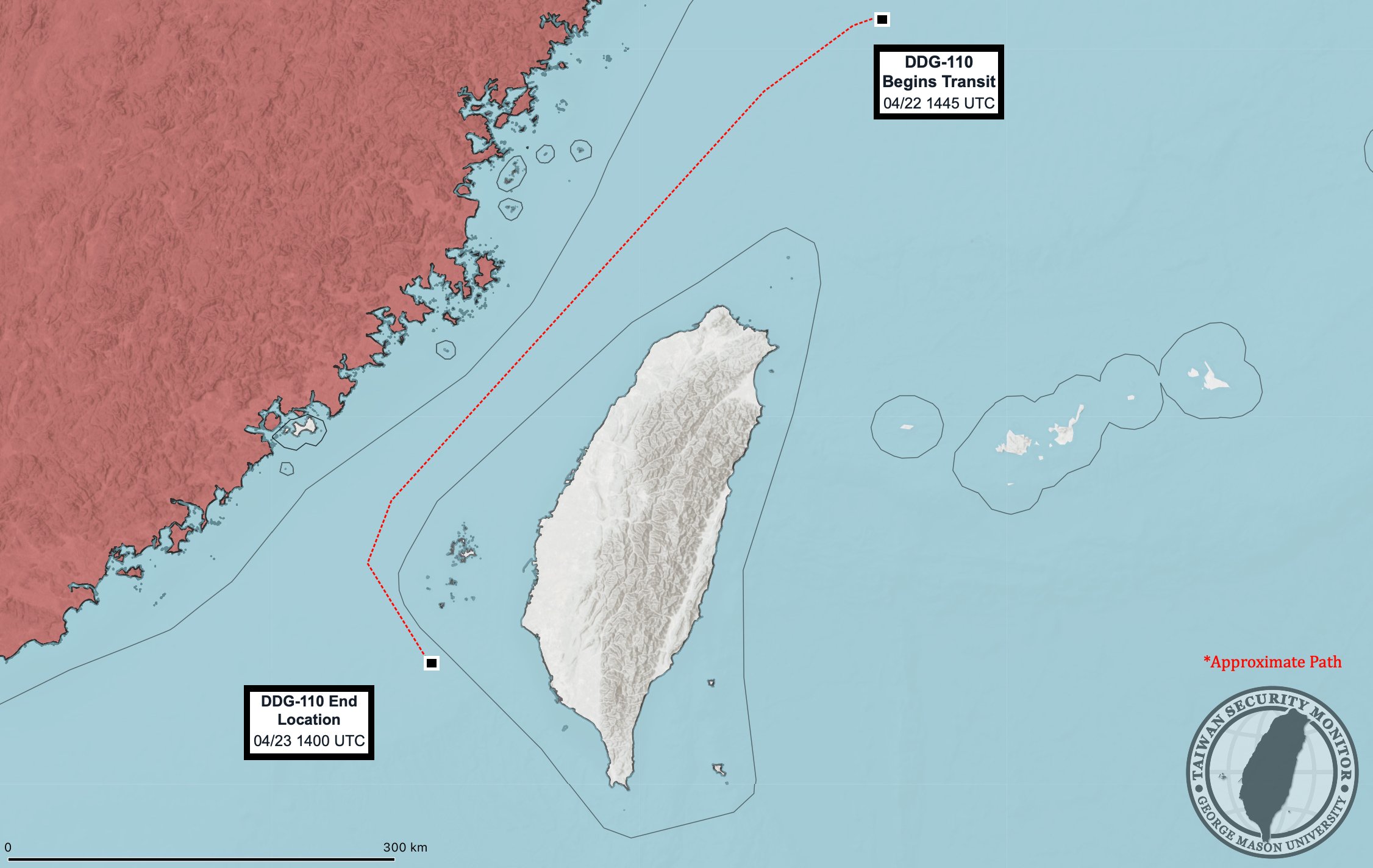U.S.-China Tensions Escalate as U.S. Destroyer Crosses Taiwan Strait
Taiwan Security Monitor
Executive Summary
The U.S. Navy’s guided-missile destroyer, USS William P. Lawrence, conducted a transit of the Taiwan Strait from April 22 to 23, marking the first such movement since February. Though unconfirmed by Taiwan’s Ministry of National Defense or the U.S. Navy, the passage comes at a time of deepening military and political tensions between the United States and China. This development occurs in parallel with heightened U.S. naval deployments in the Middle East and ongoing trade tensions, signaling a shift toward a multi-front confrontation that some observers compare to a modern Cold War. China’s recent military drills, espionage incidents, and information warfare efforts around Taiwan underscore the fragile geopolitical equilibrium in East Asia.
Analysis
The transit of the USS William P. Lawrence through the Taiwan Strait is a standard demonstration of the U.S. Navy’s commitment to freedom of navigation but carries heightened significance given recent provocations. In February, China carried out large-scale military drills near Taiwan, which Taipei characterized as “extremely rare” and threatening. These included the crossing of 22 PLA aircraft over the Strait’s median line and multiple incursions into Taiwan’s air defense zone, seen by U.S. Indo-Pacific Command as possible invasion rehearsals.
Against this backdrop, the latest transit reasserts U.S. presence in the region amid intensifying Chinese gray-zone operations, espionage, and disinformation campaigns. Taiwan has faced cable-cutting incidents linked to suspected Chinese ghost ships, balloon incursions, and military officers sentenced for espionage and attempted defection to the PRC. Beijing, meanwhile, remains steadfast in its claim over Taiwan under the One China principle and has viewed these U.S. naval operations as deliberate provocations.
The Taiwan Strait move also comes while another U.S. aircraft carrier, the USS Carl Vinson, joins the USS Harry S. Truman in Middle Eastern waters to support airstrikes against Houthi targets and increase pressure on Iran ahead of renewed nuclear negotiations. The Biden administration has made it clear that its current campaign against the Houthis is linked to broader leverage against Tehran, which is in talks that may revisit the 2015 nuclear deal framework. These multi-theater military maneuvers are viewed by analysts as a show of American force aimed at deterring adversaries and consolidating support among allies.
Meanwhile, on the trade front, President Trump’s administration is signaling a softening tone toward China. Although he previously levied 145% tariffs on Chinese imports, recent comments suggest that tariffs may be reduced by as much as 65%. Trump maintains that he seeks a “fair deal” and is not playing hardball, even as other officials hint at broader international trade talks and long-term restructuring of the U.S.-China economic relationship.
This convergence of military maneuvers and diplomatic overtures reflects a high-stakes balancing act. While military deterrence and economic decoupling remain on the table, Trump has also floated symbols of nationalism—like new flagpoles at the White House—to reinforce domestic messaging about American strength. The strategic implications of parallel pressure on Iran, deterrence in the Indo-Pacific, and trade recalibration with China position the United States at the center of an evolving global power competition.


